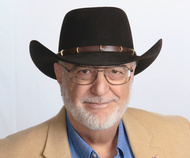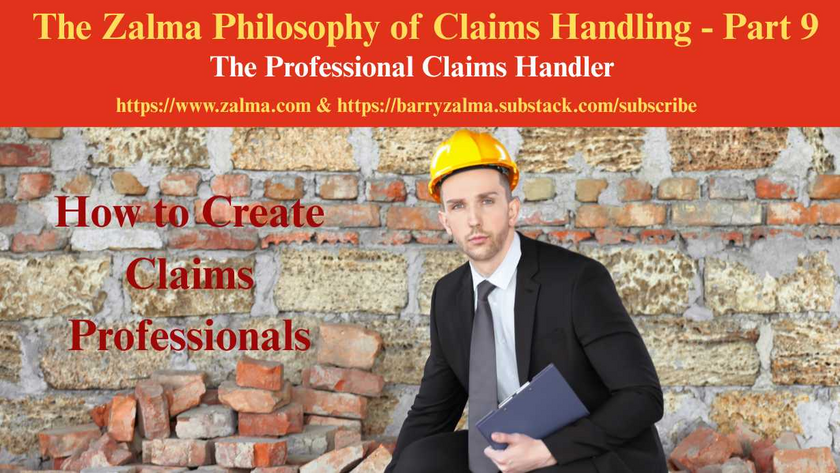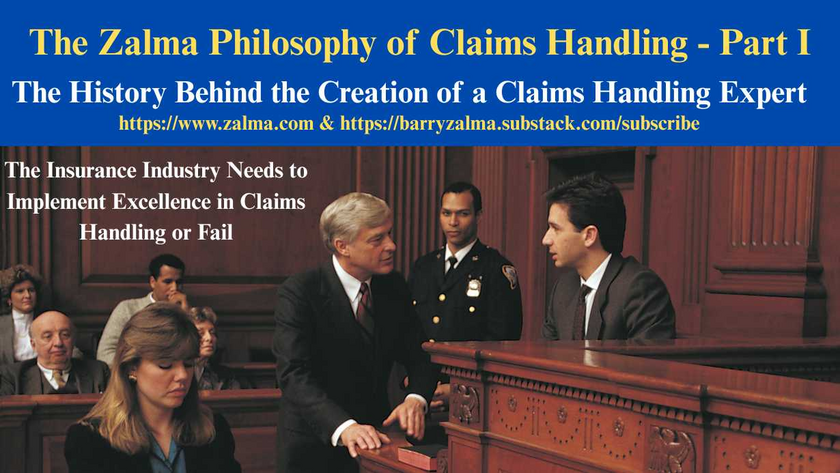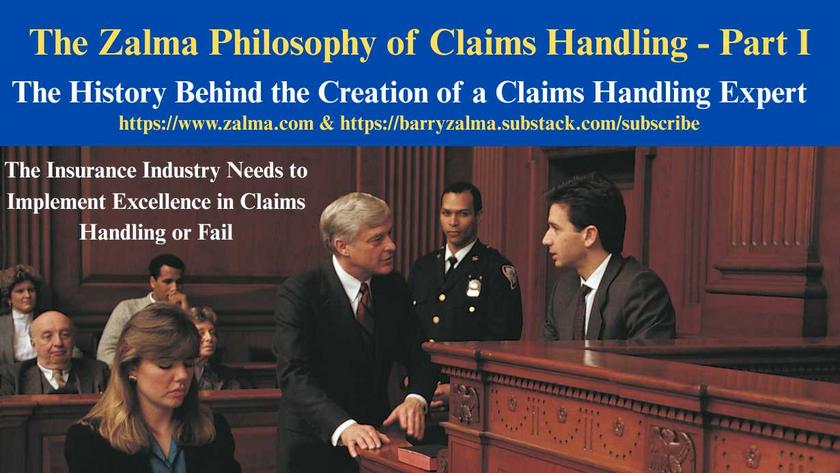
Poisoning People with Opioids is not an Occurrence
Read the full article at https://www.linkedin.com/pulse/poisoning-people-opioids-occurrence-barry-zalma-esq-cfe and at https://zalma.com/blog plus more than 4150 posts.
Posted on April 12, 2022 by Barry Zalma
McKesson, a distributor and seller of prescription drugs, held a number of liability insurance policies with Insurers between 1999 and 2017. Two policies are at issue in the cross-motions for partial summary judgment. In AIU Insurance Company, et al. v. Mckesson Corporation, No. 20-cv-07469-JSC, United States District Court, N.D. California (April 5, 2022) McKesson sought defense costs incurred with regard to mass suits over opioid distribution.
INSURANCE POLICIES
NU Policy
The NU Policy covers the period July 1, 2008 through July 1, 2009. The policy provides a “duty to defend any Suit” against McKesson “that seeks damages for Bodily Injury . . . covered by this policy, even if the Suit is groundless, false or fraudulent when the applicable . . . Retained Limits have been exhausted by payment of Loss to which this policy applies.” “Occurrence” with respect to “Bodily Injury” means “an accident, including continuous or repeated exposure to substantially the same general harmful conditions.”
The policy’s “Retained Limit” of $5 million per “Occurrence” is “exhausted by the payment of Loss to which this policy applies.” Defense costs are included in the retained limit.
ACE Policy
The ACE Policy covers the period July 1, 2015 through July 1, 2016.
The policy applies to bodily injury that “occurs during the ‘policy period’” and “is caused by an ‘occurrence.’” “Occurrence” with respect to “bodily injury” means “an accident, including continuous or repeated exposure to substantially the same general harmful conditions.”
The policy’s “Retained Limit” is $5 million per “Occurrence.”
EXEMPLAR SUITS
The parties limit their cross-motions for partial summary judgment to the duty to defend against three “exemplar suits.”
“Track One” Multidistrict Litigation Suits
In October and December 2017, respectively, Cuyahoga and Summit Counties of Ohio filed suit against McKesson and other defendants. The suits were consolidated into an opioid multidistrict litigation (“MDL”) in the Northern District of Ohio.
The suits allege that McKesson “fail[ed] to: (a) control the supply chain; (b) prevent diversion; (c) report suspicious orders; and (d) halt shipments of opioids in quantities [it] knew or should have known could not be justified and were indicative of serious overuse of opioids.” The counties further allege that McKesson “intentionally, unreasonably, and/or unlawfully deceptively marketed and pushed as many opioids onto the market as possible, fueling addiction to and diversion of these powerful narcotics, ” and breached its duty of care by “choosing not to effectively monitor for suspicious orders, ” “choosing not to investigate suspicious orders, ” “choosing not to report suspicious orders, ” and “choosing not to stop or suspend shipments of suspicious orders.”
Oklahoma Suit
In May 2020, the State of Oklahoma filed suit against McKesson. The suit asserts claims for negligence, statutory public nuisance, and unjust enrichment. By flooding Oklahoma generally with more opioids than could be used for legitimate medical purposes and by filling and failing to report orders that they knew or should have known were likely being diverted for illicit and/or non-medical uses, McKesson breached [its] duty.
Duty to Defend
McKesson represents that it has paid more than $230 million to defend against the thousands of opioid lawsuits as of January 2021. It has paid more than $60 million in defense costs in the opioid MDL for the period July 2018 to October 2019, the substantial majority of which was incurred to defend the Track One lawsuits. McKesson represents that, to date, Insurers have not defended McKesson against any of the opioid lawsuits, acknowledged a duty to defend, or reimbursed McKesson’s defense costs.
DISCUSSION
The duty to defend is broader than the duty to indemnify. Unlike the obligation to indemnify, which is only determined when the insured’s underlying liability is established, the duty to defend must be assessed at the very outset of a case. An insurer may have a duty to defend even when it ultimately has no obligation to indemnify, either because no damages are awarded in the underlying action against the insured, or because the actual judgment is for damages not covered under the policy.
An insurer and insured seeking a declaratory judgment on the duty to defend have different burdens. The insured must prove the existence of a potential for coverage, while the insurer must establish the absence of any such potential. In other words, the insured need only show that the underlying claim may fall within policy coverage; the insurer must prove it cannot.” [Liberty Surplus Ins. Corp. v. Ledesma & Meyer Constr. Co. (“Ledesma”), 418 P.3d 400, 403 (Cal. 2018).]
While the duty to defend is broad, it is not unlimited. McKesson contends that the exemplar suits are at least potentially covered by the NU and ACE policies because they seek damages for “bodily injury” caused by an “occurrence” and because McKesson has exhausted the retention limit for a single occurrence.
The exemplar suits seek, at least potentially and at least in part, forms of relief that might reimburse the government plaintiffs’ costs of responding to and providing care for the bodily injury suffered by people in their jurisdictions. McKesson has established that the exemplar suits at least potentially meet the “bodily injury” requirement for coverage. The question is was the “bodily injury” caused by an accident or occurrence.
OCCURRENCE
The policies cover bodily injury that “is caused by an occurrence.” With respect to bodily injury, an “occurrence” is “an accident, including continuous or repeated exposure to substantially the same general harmful conditions.” Accident does not apply to an act’s consequences, but instead applies to the act itself. [State Farm Gen. Ins. Co. v. Frake (“Frake”), 128 Cal.Rptr.3d 301, 309 (Cal.Ct.App. 2011).]
Deliberate Conduct – Non-Negligence Claims
Non-negligence claims form the greater part of the exemplar suits. The Track One complaints bring claims for violations of the federal RICO Act and the OCPA, statutory public nuisance, common law absolute public nuisance, injury through criminal acts, unjust enrichment, and civil conspiracy. The Oklahoma complaint brings claims for statutory public nuisance and unjust enrichment.
The allegations that McKesson engaged in a scheme to evade the law and increase profits can only describe intentional, deliberate acts. The exemplar suits’ claims of RICO Act violations, OCPA violations, public nuisance, injury through criminal acts, unjust enrichment, and civil conspiracy are based on specific allegations of deliberate conduct.
Negligence Claims
Each of the exemplar suits includes a negligence claim.
The core distinction between negligence and intentional torts is whether the conduct was done with the purpose of causing harm or with a certainty that harm would result, not whether the conduct was deliberate. Coverage turns not on the technical legal cause of action pleaded by the third party but on the facts alleged in the underlying complaint or otherwise known to the insurer
According to the complaints, McKesson knew or should have known that incoming orders “were suspicious, ” that shipments went to “pill mills, ” that the quantities “could not be justified” and “exceeded any legitimate market, ” that “diversion . . . was likely occurring, ” and that its conduct “would have serious consequences.”
Additional, Unexpected, Independent, and Unforeseen Happening
Because all the claims in the exemplar suits rest on allegations of deliberate conduct, there is no insurable accident under the policies. The complaints allege that opioids from McKesson’s distribution were diverted, that is, routed from legitimate to illegitimate uses. But they specify that the quantities of McKesson’s distribution so vastly exceeded legitimate use that the opioids must have been diverted.
It is not unexpected or unforeseen that a massive marketing campaign to promote the use of opioids for purposes for which they are not suited would lead to a nation “awash in opioids.” The alleged quantities of McKesson’s distribution make the alleged diversion expected and foreseen as a matter of law. In sum, the exemplar suits bring claims based on alleged deliberate conduct. McKesson’s distribution of opioids produced the government plaintiffs’ injuries. Because the claims are based on deliberate conduct, they do not allege an accident.
The Insurers established conclusively that the exemplar suits do not meet the “occurrence” requirement for coverage, and there is no potential for coverage of the three exemplar suits under the two policies at issue.
For the reasons explained above, NU and ACE’s motions for partial summary judgment on the duty to defend were granted. McKesson’s motion for partial summary judgment on the duty to defend was denied.
ZALMA OPINION
Liability insurance, by definition, can only respond to a fortuitous event, an accident. Liability insurance should never respond with defense or indemnity if the conduct that is the subject of the suits filed against the insured were the result of the insured’s intentional conduct. McKesson must pay its own defense and indemnity.
(c) 2022 Barry Zalma & ClaimSchool, Inc.
Barry Zalma, Esq., CFE, now limits his practice to service as an insurance consultant specializing in insurance coverage, insurance claims handling, insurance bad faith and insurance fraud almost equally for insurers and policyholders. He practiced law in California for more than 44 years as an insurance coverage and claims handling lawyer and more than 54 years in the insurance business. He is available at http://www.zalma.com and [email protected].
Subscribe to Zalma on Insurance at locals.com https://zalmaoninsurance.local.com/subscribe.
Subscribe to Excellence in Claims Handling at https://barryzalma.substack.com/welcome.
Write to Mr. Zalma at [email protected]; http://www.zalma.com; http://zalma.com/blog; daily articles are published at https://zalma.substack.com.
Go to the podcast Zalma On Insurance at https://anchor.fm/barry-zalma; Follow Mr. Zalma on Twitter at https://twitter.com/bzalma; Go to Barry Zalma videos at Rumble.com at https://rumble.com/c/c-262921; Go to Barry Zalma on YouTube- https://www.youtube.com/channel/UCysiZklEtxZsSF9DfC0Expg; Go to the Insurance Claims Library – https://zalma.com/blog/insurance-claims-library/
Refusal to Provide Workers’ Compensation is Expensive
Post 5240
Read the full article at https://lnkd.in/guC9dnqA, see the video at https://lnkd.in/gVxz-qmk and at https://lnkd.in/gUTAnCZw, and at https://zalma.com/blog plus more than 5200 posts.
In Illinois Department of Insurance, Insurance Compliance Department v.USA Water And Fire Restoration, Inc., And Nicholas Pacella, Individually And As Officer, Nos. 23WC021808, 18INC00228, No. 25IWCC0467, the Illinois Department of Insurance (Petitioner) initiated an investigation after the Injured Workers’ Benefit Fund (IWBF) was added to a pending workers’ compensation claim. The claim alleged a work-related injury during employment with the Respondents who failed to maintain workers’ compensation Insurance.
Company Overview:
USA Water & Fire Restoration, Inc. was incorporated on January 17, 2014, and dissolved on June 14, 2019, for failure to file annual reports and pay franchise taxes. It then operated under assumed names including USA Board Up & Glass Co. and USA Plumbing and Sewer. The business ...
Arsonist Incompetently Moves Pro Se to Avoid Prison
Post 5239
Read the full article at https://lnkd.in/gRX8TfKn, see the video at https://lnkd.in/gY3Jvnqp and at https://lnkd.in/gRCaaf-3, and at https://zalma.com/blog plus more than 5200 posts.
In Christopher A. Barosh v. Morris Houser, et al., Civ. No. 22-0769, United States District Court, E.D. Pennsylvania (November 25, 2025) a convicted arsonist and insurance fraudster moved the USDC acting in Pro se filed Objections to Magistrate Judge Reid’s Recommendation that the US District Judge dismiss his § 2254 Petition to avoid jail.
BACKGROUND
In October 2005, Barosh set fire to his girlfriend’s Philadelphia home — some 25 hours before the cancellation of the property’s insurance policy. Several witnesses saw Barosh leaving the property shortly before the fire erupted. After the fire, Barosh made “two separate admissions of guilt.”
He attempted to pay an acquaintance to provide him with an alibi for the time of the arson. The eyewitnesses, brother, and ...
Conditional Release Allows Supplemental Claims
Post 5238
Read the full article at https://lnkd.in/ge2yNQby, see the video at https://lnkd.in/gcSF9KWj and at https://lnkd.in/gQfJqwiM, and at https://zalma.com/blog plus more than 5200 posts.
A Release Should Totally Resolve Dispute
In Harvey et al. v. Hall, No. A25A1774, Court of Appeals of Georgia, Fourth Division (December 3, 2025) Paul Harvey, an employee of Arthur J. Dovers (d/b/a 3D Mobile Home Services), drove a truck towing a trailer loaded with machinery and equipment. Harvey fell asleep, veered off the road, and crashed into a culvert, causing Lamar Hall serious injuries.
FACTS OF SETTLEMENT
On August 18, 2020, Hall signed a limited liability release under OCGA § 33-24-41.1, releasing Harvey, Dovers, and their insurer (Georgia Farm Bureau Insurance Company) from liability for the accident in exchange for $50,000, “except to the extent other insurance coverage is available which covers the claim.”
Dovers’s general liability insurer (Republic-Vanguard ...
The Professional Claims Handler
Post 5219
Posted on October 31, 2025 by Barry Zalma
An Insurance claims professionals should be a person who:
Can read and understand the insurance policies issued by the insurer.
Understands the promises made by the policy.
Understand their obligation, as an insurer’s claims staff, to fulfill the promises made.
Are competent investigators.
Have empathy and recognize the difference between empathy and sympathy.
Understand medicine relating to traumatic injuries and are sufficiently versed in tort law to deal with lawyers as equals.
Understand how to repair damage to real and personal property and the value of the repairs or the property.
Understand how to negotiate a fair and reasonable settlement with the insured that is fair and reasonable to both the insured and the insurer.
How to Create Claims Professionals
To avoid fraudulent claims, claims of breach of contract, bad faith, punitive damages, unresolved losses, and to make a profit, insurers ...

The History Behind the Creation of a Claims Handling Expert
The Insurance Industry Needs to Implement Excellence in Claims Handling or Fail
Post 5210
This is a change from my normal blog postings. It is my attempt. in more than one post, to explain the need for professional claims representatives who comply with the basic custom and practice of the insurance industry. This statement of my philosophy on claims handling starts with my history as a claims adjuster, insurance defense and coverage lawyer and insurance claims handling expert.
My Training to be an Insurance Claims Adjuster
When I was discharged from the US Army in 1967 I was hired as an insurance adjuster trainee by a professional and well respected insurance company. The insurer took a chance on me because I had been an Army Intelligence Investigator for my three years in the military and could use that training and experience to be a basis to become a professional insurance adjuster.
I was initially sat at a desk reading a text-book on insurance ...

The History Behind the Creation of a Claims Handling Expert
The Insurance Industry Needs to Implement Excellence in Claims Handling or Fail
Post 5210
This is a change from my normal blog postings. It is my attempt. in more than one post, to explain the need for professional claims representatives who comply with the basic custom and practice of the insurance industry. This statement of my philosophy on claims handling starts with my history as a claims adjuster, insurance defense and coverage lawyer and insurance claims handling expert.
My Training to be an Insurance Claims Adjuster
When I was discharged from the US Army in 1967 I was hired as an insurance adjuster trainee by a professional and well respected insurance company. The insurer took a chance on me because I had been an Army Intelligence Investigator for my three years in the military and could use that training and experience to be a basis to become a professional insurance adjuster.
I was initially sat at a desk reading a text-book on insurance ...














